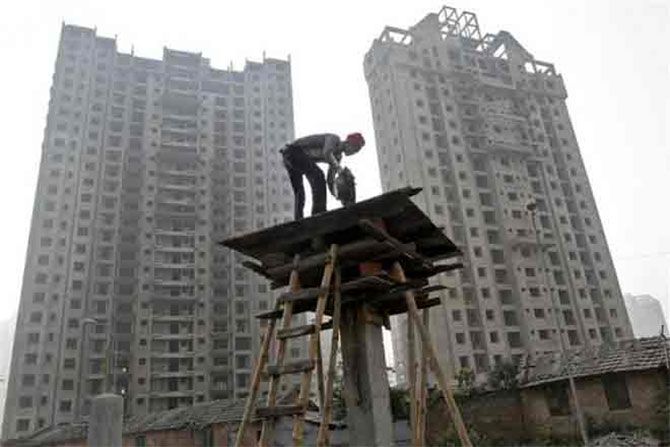 The economists, who were surveyed, also felt it will take time for banks to make any further reduction in deposit rates
The economists, who were surveyed, also felt it will take time for banks to make any further reduction in deposit rates

India's economy is likely to expand 7.8 per cent during the current financial year on the back of good monsoons, said economists polled by Ficci.
Releasing the latest survey, Ficci said there has been a "marginal improvement" in growth estimate for 2016-17 as against the previous round and "this comes at the back of better performance of the agriculture and industry sector".
The monsoon season has been good this year which is expected to support agricultural production, it added.
Reserve Bank has also said the near-term growth outlook for India seems brighter than last fiscal and the economy is likely to expand at 7.6 per cent in 2016-17.
Ficci's Economic Outlook Survey puts across a median GDP growth forecast of 7.8 per cent for the current fiscal year.
Further, the estimated median GVA (gross value added) growth for Q1 FY17 has been put at 7.6 per cent.
The survey was conducted during July-August among leading economists belonging to the industry, banking and financial services sector.
However, the survey results indicate a marginal decline in the service sector growth this year vis-à-vis the estimated growth in the previous survey round.
The participating economists also felt it will take time for the banks to make any further reduction in deposit rates.
They said while the moves undertaken by the RBI and government are likely to reduce the banks' operational cost, the high stock of NPAs and provisions for public sector banks are posing a challenge as far as transmission is concerned.
As per the survey, the median growth forecast for IIP has been put at 3.5 per cent for the year 2016-17, with a minimum and maximum range of 2 per cent and 4.3 per cent, respectively.
Ficci said the median inflation forecast for 2016-17 has noted a marginal increase in comparison to the previous round.
The median forecast for Wholesale Price Index based inflation rate for 2016-17 has been put at 2.4 per cent while for Consumer Price Index it is 5.2 per cent.
“The improvement in rural demand on the back of a pickup in farm sector is likely to give an impetus to industrial growth. Industry is projected to grow by 7.3 per cent in 2016-17, 0.2 per cent points higher than the projection as per our previous survey round," Ficci said.
The chamber further said that recent data points indicate an increase in inflation on the back of elevated food prices, but nonetheless, "prices are expected to remain range bound going ahead given good monsoons and an improved acreage".
In addition to the forecast for key macro variables, the economists were asked for views on certain topical issues.
The government, earlier in 2016, decided to cut interest rates on small savings. The RBI implemented the Marginal Cost Lending Rate (MCLR) Framework with effect from April 1, 2016.
Alongside, refinements were seen in liquidity management by RBI to allow for an improved transmission. However, transmission of monetary policy still remains an issue. Given this backdrop, economists were asked to share their views.
Majority of the participating economists said for most Indian banks, time deposits remain the most important source of bank funding as compared to other sources of funding (such as market borrowing) as it is cheaper and allows banks to enjoy higher interest spreads.
It was highlighted that the growth of time deposits was seen at a 53-year-low of 9.9 per cent in 2015-16.
Given this scenario, economists felt it will take time for the banks to make any further reductions in deposit rates, which will consequently lead to reduction in MCLR and lending rates thereof. Slowdown in time deposits has slowed the growth of bank credit as well.
On export front, majority of the economist felt that a change (devaluation) in the exchange rate can only help in the short run. In the long run, it would be ineffective as other countries would follow suit.
Economists felt the present rupee-US dollar exchange rate in the band of 65-68 is fair and is consistent with current macro fundamentals.
They, Ficci said, unanimously agreed that to attain a higher level of growth, focus should be laid on investing more on building capacities through infrastructure development.
As per the survey, India needs investment led growth which will augment potential output and check inflation.
The most recent reform measures - Goods and Services Tax, push to public investments and Insolvency and Bankruptcy Code - are steps in the right direction.





